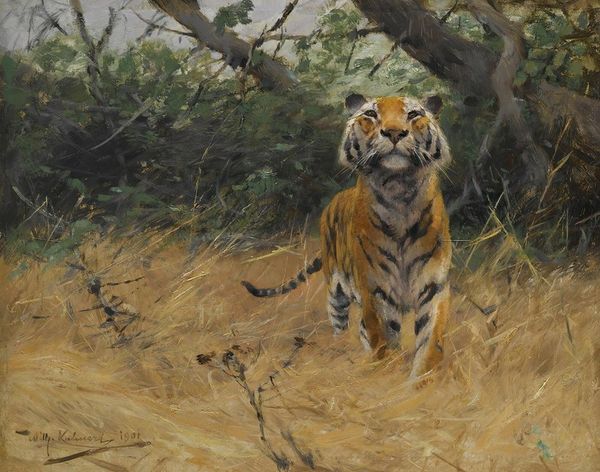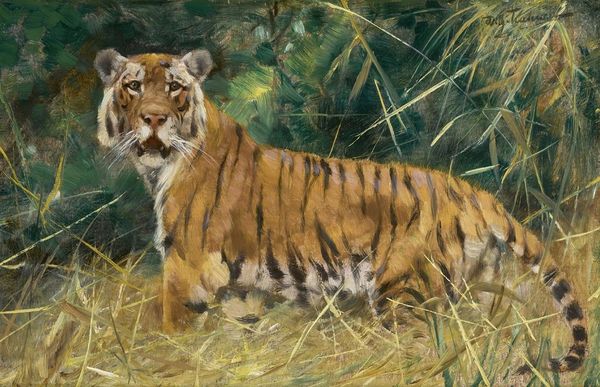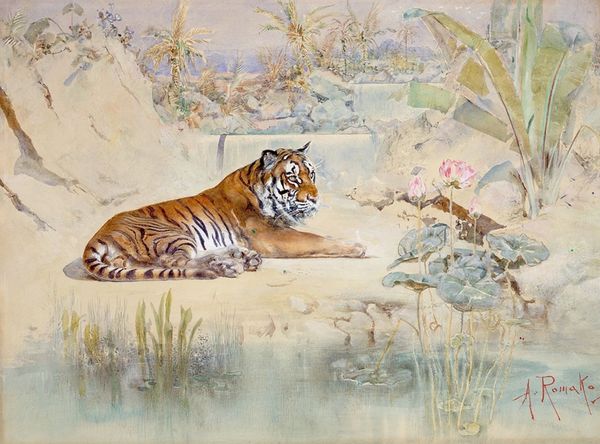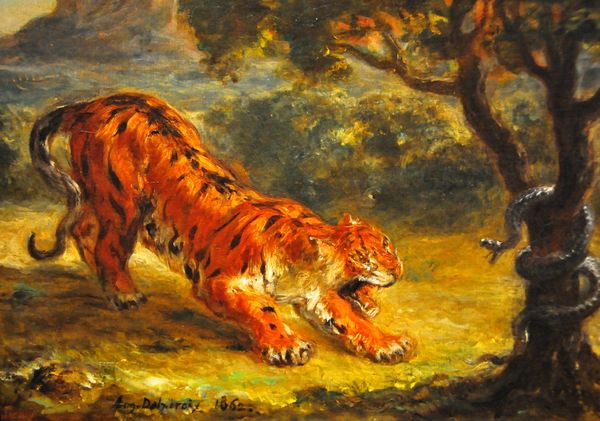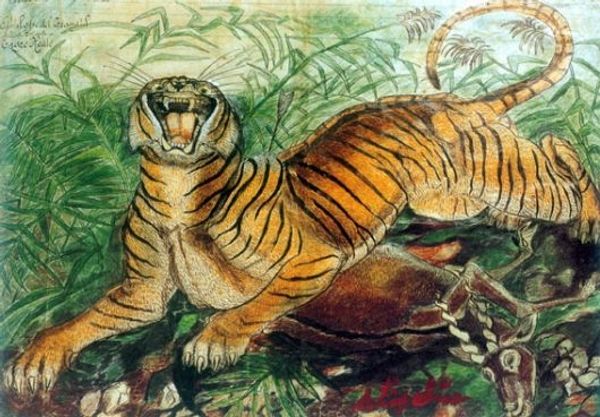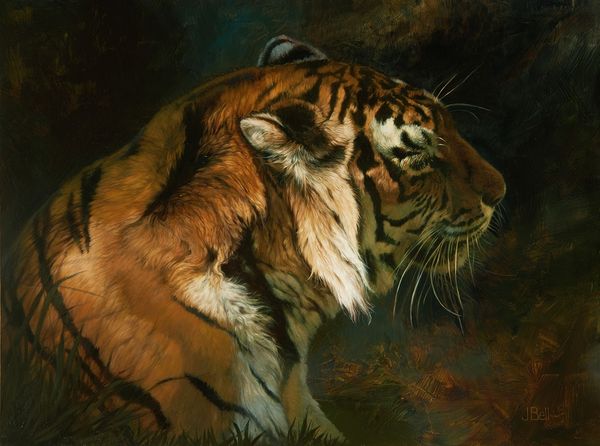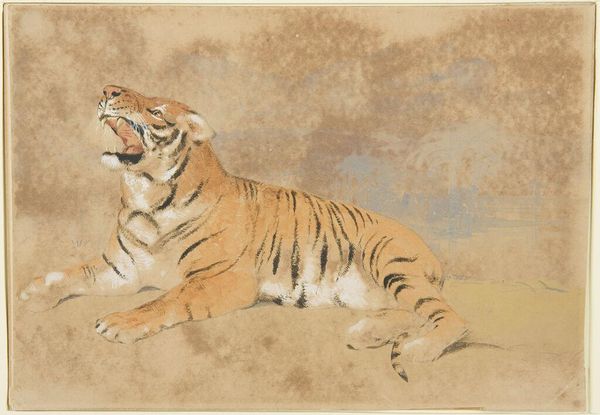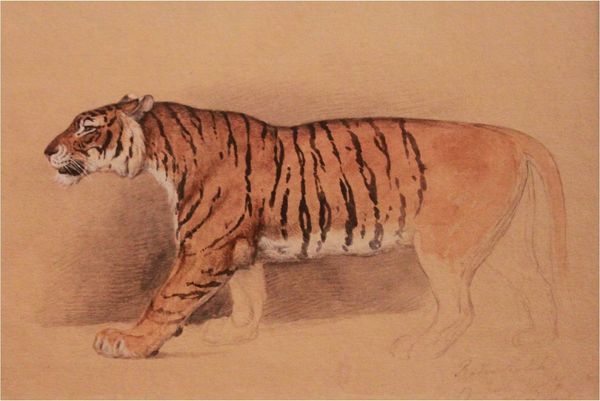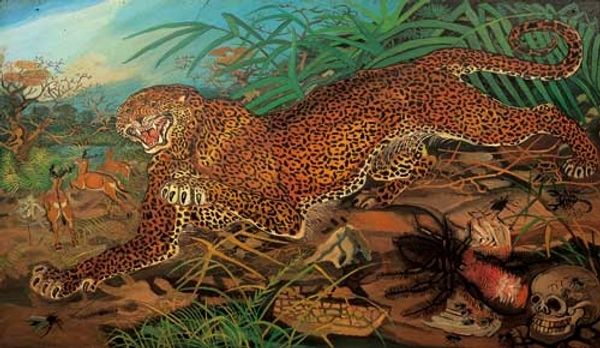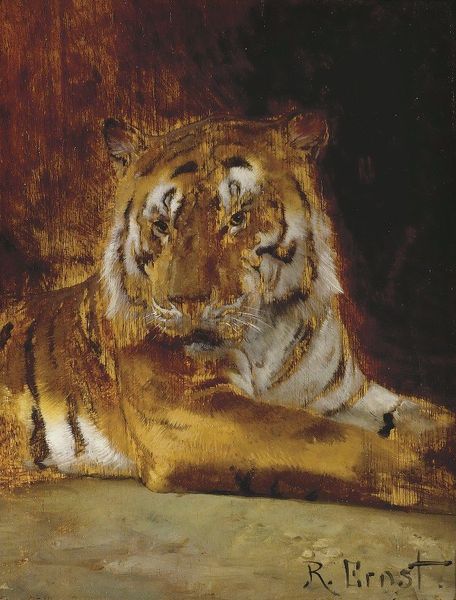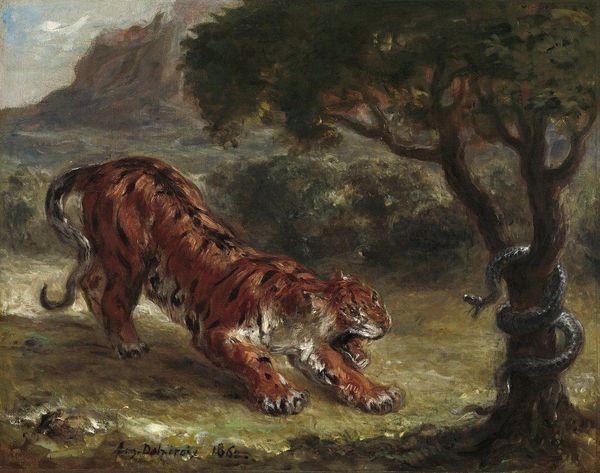
Copyright: Public domain
Editor: Richard Friese's "The Tiger," painted in 1890 with oil paints, presents a powerful image. I am struck by how it captures a raw intensity, the tiger’s snarl feels incredibly visceral against the almost serene landscape. What stands out to you most in this piece? Curator: What grips me? It's more than the snarl, isn't it? Friese wasn't just painting a tiger; he was tapping into something primal within himself. Those brushstrokes aren't just mimicking fur; they're mimicking feelings. Think about the tall grasses, their deceptive sway in the breeze – nature, seemingly peaceful, yet harboring a life-or-death drama unfolding at its feet. Does the prey’s presence beneath the Tiger seem central or of secondary importance, to you? Editor: Secondary, definitely. I think the focus is almost entirely on the Tiger and it is more of a portrait than the main focus of the whole canvas. But how does Friese manage to evoke such raw emotion through paint, especially when depicting something so removed from our everyday lives? Curator: It's that translation, that leap from observation to emotional resonance, isn't it? Friese is playing with our understanding of power, both the tiger's and, dare I say, our own. There's a hint of us, humans, lurking somewhere in that beast’s predatory nature. Don’t you think it's fascinating how a single image can make you feel both thrilled and deeply uneasy? Editor: It's truly powerful, the painting makes us consider complex relationships with both nature and with our baser instincts. Thanks for sharing your unique and informed insight into the work. Curator: And thank you, it's through questions like yours that these painted portals truly open up and allow a deeper look, wouldn’t you agree?
Comments
No comments
Be the first to comment and join the conversation on the ultimate creative platform.

